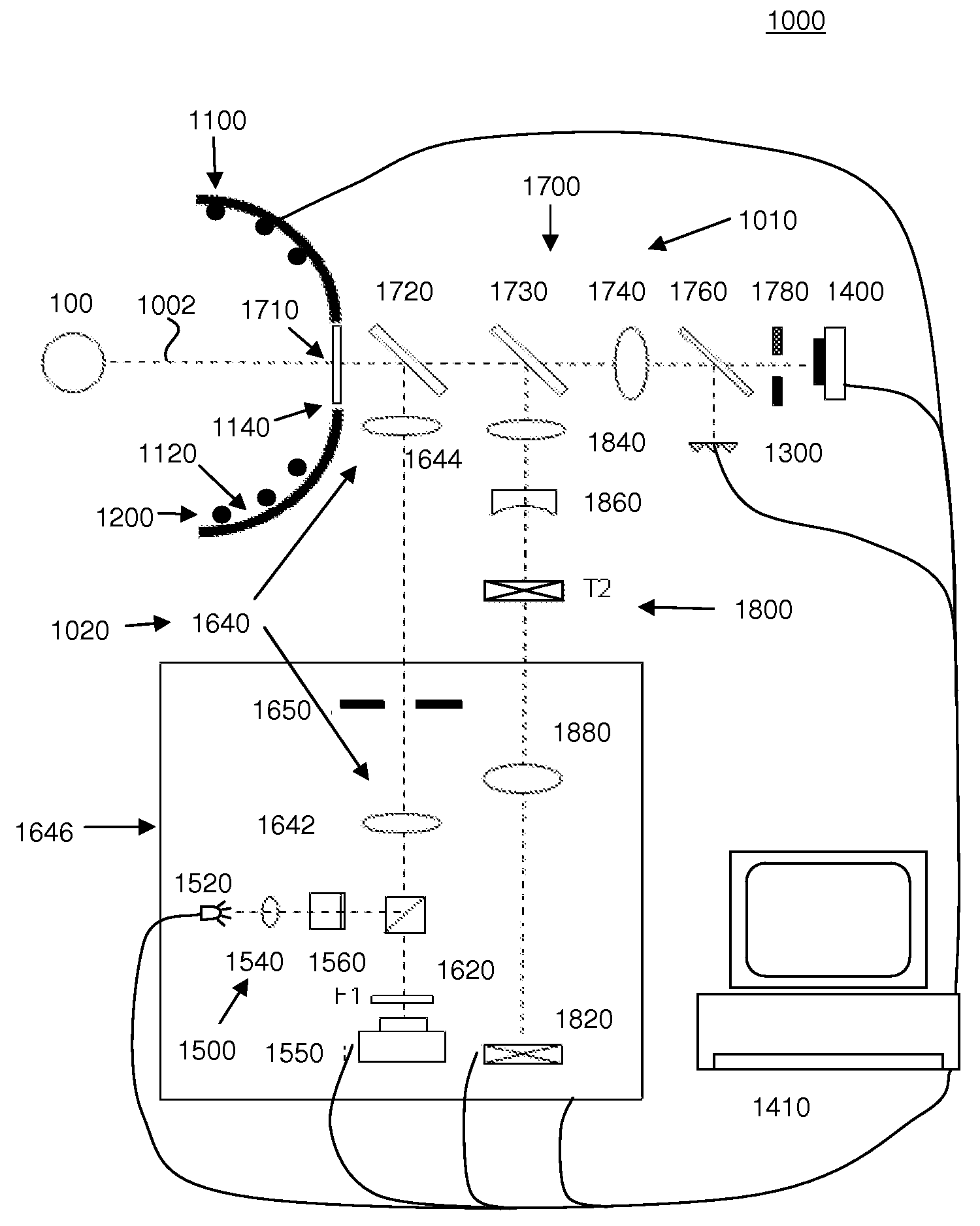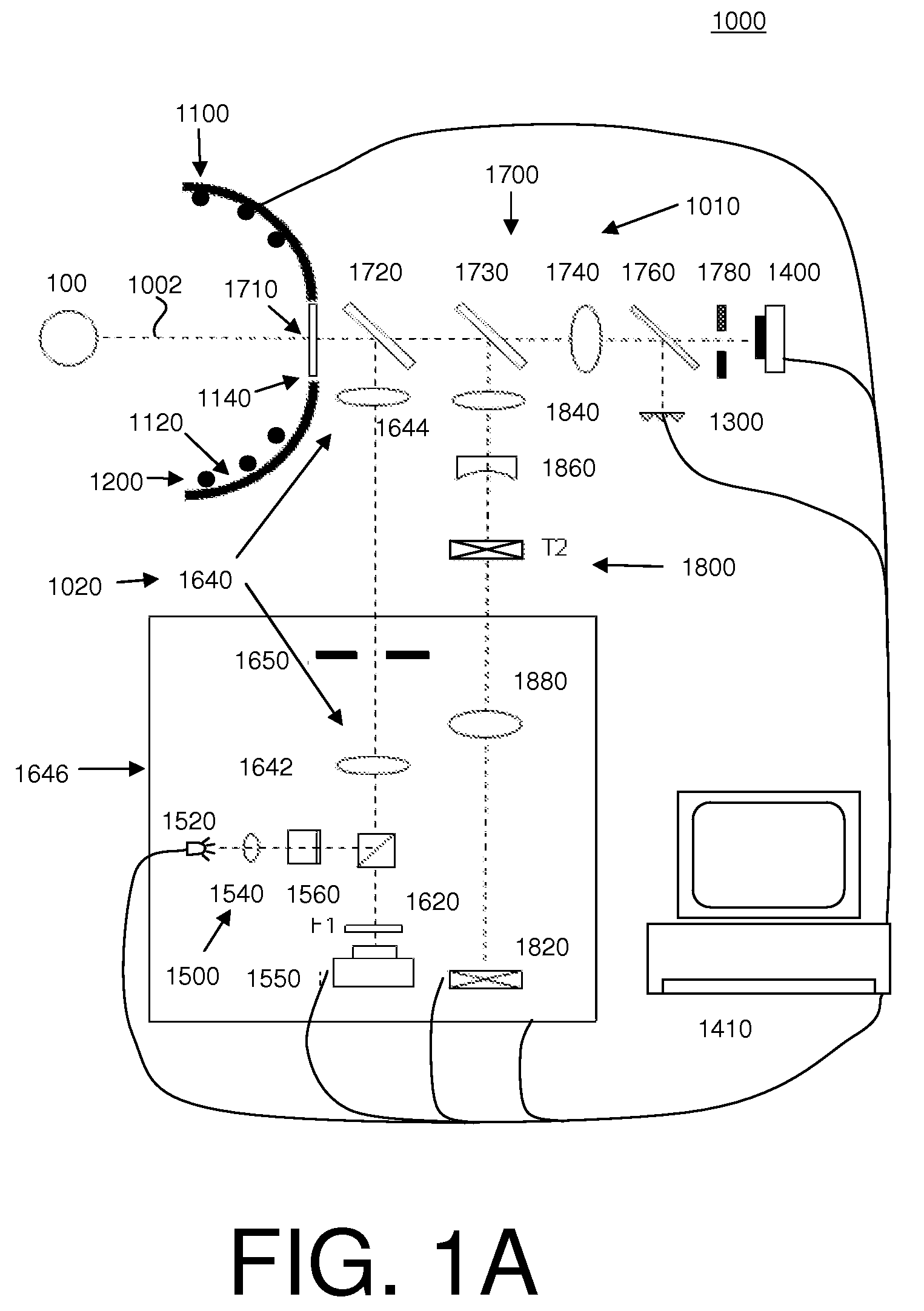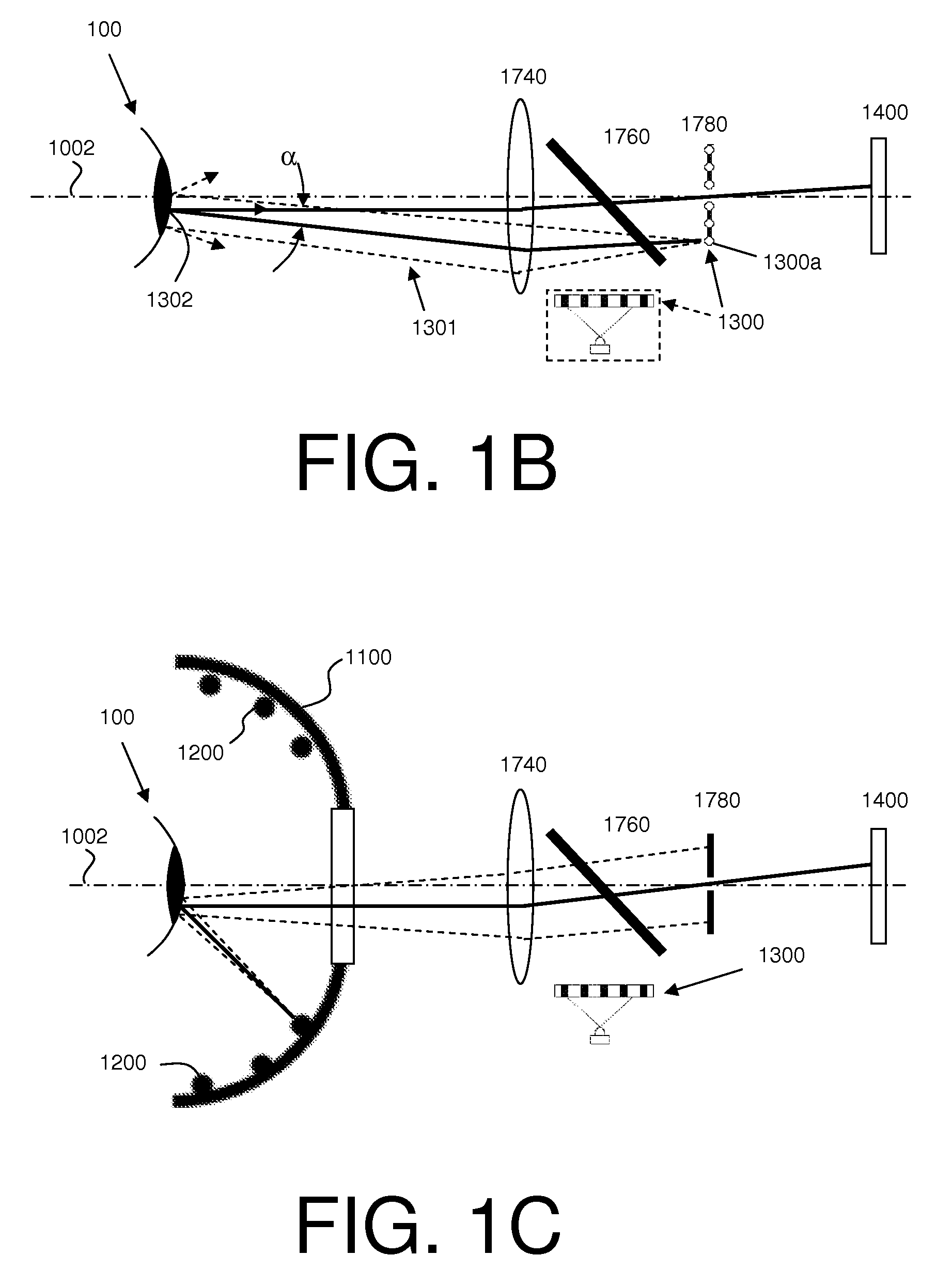Systems and Methods for Measuring the Shape and Location of an object
a technology of object shape and location, applied in the field of optical diagnostics, can solve the problems of data obtained, problem exacerbated, central region of corneal surface cannot be detected during the measurement,
- Summary
- Abstract
- Description
- Claims
- Application Information
AI Technical Summary
Benefits of technology
Problems solved by technology
Method used
Image
Examples
Embodiment Construction
[0045]As discussed above, it would be desirable to provide systems overcome some of the problems associated with optical measurement systems such as vertex error. Such systems would be particularly beneficial in the areas of metrology and ophthalmic measurement. One example discussed in greater detail herein is a combined system for measuring aberrations and a corneal topography of an eye.
[0046]FIG. 1A shows one embodiment of a system 1000 for measuring aberrations and corneal topography of an eye 100. System 1000 comprises a topographer 1010, an aberrometer or wavefront analyzer 1020, and a processor 1410. The topographer 1010 comprises a structure 1100 having a principal surface 1120 with an opening or aperture 1140 therein; a plurality of first (or peripheral) light sources 1200 provided on the principal surface 1120 of the structure 1100; a plurality of second, or central, light sources 1300 (also sometimes referred to as “Helmholtz light sources”); and a detector, photodetector...
PUM
 Login to View More
Login to View More Abstract
Description
Claims
Application Information
 Login to View More
Login to View More - R&D
- Intellectual Property
- Life Sciences
- Materials
- Tech Scout
- Unparalleled Data Quality
- Higher Quality Content
- 60% Fewer Hallucinations
Browse by: Latest US Patents, China's latest patents, Technical Efficacy Thesaurus, Application Domain, Technology Topic, Popular Technical Reports.
© 2025 PatSnap. All rights reserved.Legal|Privacy policy|Modern Slavery Act Transparency Statement|Sitemap|About US| Contact US: help@patsnap.com



